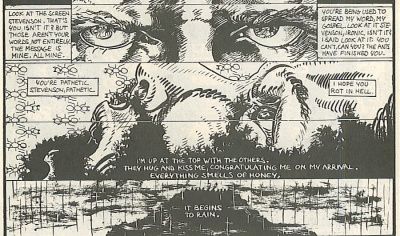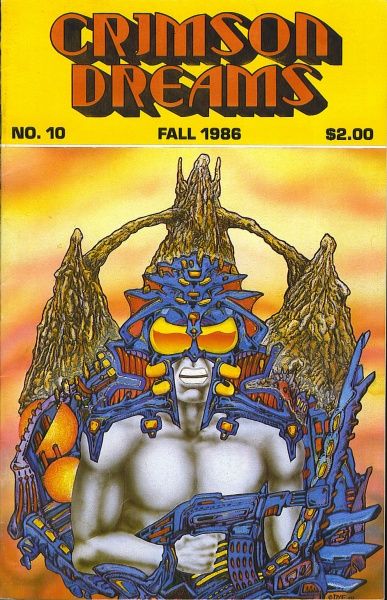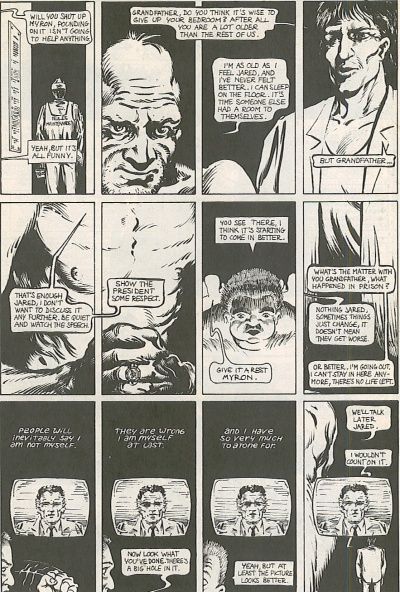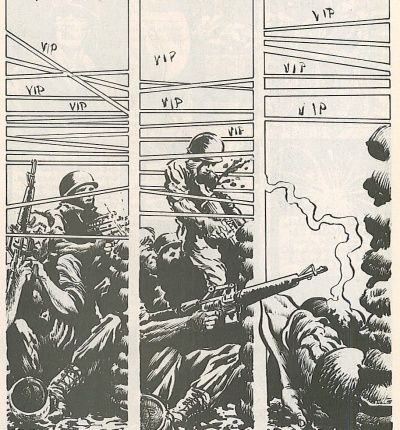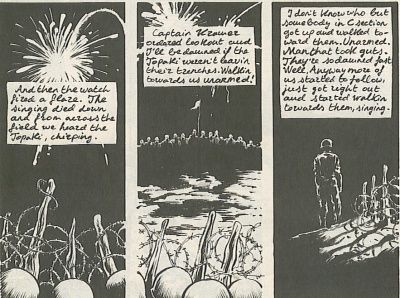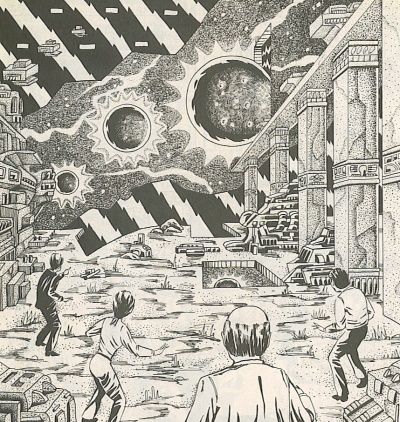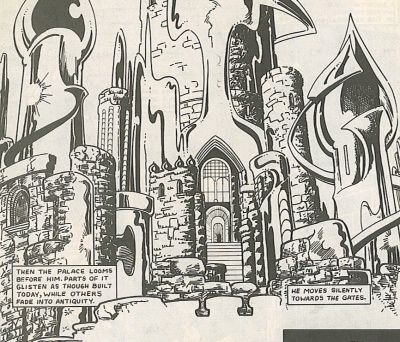Ground rules, as usual.
Today's entry features a rather obscure comic with some very early work by one of Cronin's favorite comics professional! Who could it be? Read on ... below the fold!
Crimson Dreams #10. Stories by Steve Csutoras, Craig Gassen, and "Steve" Gaudiano; Bob Cornely and Gaudiano; Gregory Dye; and Frank Albanese and Gaudiano. Published by Crimson Productions, Fall 1986.
This is a strange little anthology title,notable only because it features stories drawn by Stefano Gaudiano, who is now working on Daredevil with Michael Lark. He's actually referred to as "Stefano" inside the book, so it's odd that in the credits he's called "Steve." This isn't the 1930s and '40s in Hollywood, after all, where poor little Archibald Leach couldn't get work unless he changed his name. So it's weird to see it Anglicized.
The comic is actually better than it should be, largely because of Gaudiano's art. He actually has some ideas about how to put a page together, and a few pages are quite fasctinating in their composition. This page, for instance:
I like how the grandfather dominates the page, even as he's broken up into panels. It's nicely done. Gaudiano may not have actually pencilled this story (like his current work, he and Gassen and simply credited with "art," with no indication of how they share the workload), but it looks enough like his art on Kafka (the only other early work by him that I've seen) that I'm willing to give him credit. That's the first story. The second story is solely illustrated by Gaudiano, and it's a bit more amorphous - the lines aren't quite as crisp, and he uses far more shadows andnegativespacefor effect. It's still a very nice-looking story, though. In the final story, he's back to sharing the work with Albanese, and the lines are more delineated, and the inks are not as rough. It's interesting to view the art in the three stories and wonder how much influence Gaudiano had on it. The art remains the highlight of this book, and a first-time comic book reader might be impressed by how an artist can pack so much information into such small panels, as Gaudiano does on many pages. This is an example of an anthology series that doesn't have a lot of page spacefor decompressed stories, so there is a lot going on in each panel. It's somewhat refreshing to see.
The stories, unfortunately, vary in quality, with none really shining. Two of the stories are continued from previous issues, and this creates a problem. As an anthology series, each story gets very little space allotted to it, so the writer can't really waste a lot of time catching new readers up. So the first andfourth stories ("Random Thoughts" and "The Chronicles of Crosstar - Chapter VIII, Walls Do Not A Fortress Make," respectively) don't do a good job getting us up to speed. In "Random Thoughts," the president is trying to expose a conspiracy headed by the Pope, but the Pope changes the broadcast to make it sound as if the president is supporting the Catholic Church. President Stevenson is killed but it's put out that he has been institutionalized, and things go on as before. Meanwhile, the people watching the broadcast are apparently important, because the old man in the page above is not actually who he's supposed to be - he's an imposter, spying on the people in the apartment. But we don't really get a clear sense of what's going on except it's a typical Fascist Church Takes Over Everything And Makes Everyone Worship Their Evil Catholic Pope story. We've seen it many times before, and the only thing really that notable about it is the way the art fits all the information into 8 pages. It's nicely done.
The second story is another kind we've all seen before, especially because it's based on a real event, the meeting of French and German soldiers at Christmastime in World War I, when they briefly put aside their differences and sang carols (John Keegan, one of the pre-eminent war historians, assures us that it actually happened). This story takes place in 2094 and the enemy are bug things, but the principle is the same. So it doesn't really resonate, although, as I've mentioned, Gaudiano's art does a nice job with the roughness of the trenches.
The third story ("WhatDoYou Mean, Reality?")is self-contained as well, but it's again not terribly memorable. A scientist is experimenting with virtual reality and subjects bringing thoughts from their subconscious mind to life, and the scientist and three observers get caught in the subject's thoughts ... or do they? It doesn't really do much with the idea of observed reality and whether it's completely subjective, and whether we ourselves are part of someone else's dreams. Not that we should expect a lot of deepinsightin 8 pages, of course.
Finally, the fourth story throws us into the middle of a plot, beginning in one galaxy but quickly shifting to another. A man, Jordann, slips through the streets of a city searching for a fearsome weapon. He finds it and uses it to teleport himself to "where Phoebeous is" so he can free her. At that moment, Jordann's mentor, Nailtti, is attacked by Cormund, who is some sort of lizard man. Cormund defeats Nailtti and then disappears. To be continued! This is another 8-page story that gives us very little information about how we have reached this point, because it doesn't have room. That makes this and the first story disappointments because we can infer a few things, but not enough to make the stories really comprehensible. Both stories don't seem to offer us much in the way of dazzling originality, either, which makes it more difficult to care.
For a first-time comic reader, this might not make you want to pick up the preceding and successive issues, but it does a good job showing what you can do with comics. As I have already pointed out, the art does a good job establishing a mood with very little room to work, and even though the stories aren't that good, they manage to get a lot of information out in confined space. The possibilities of the medium are on display here, even if the quality of the book is lacking. This is the kind of comic that might make a first-timer reconsider a negative opinion of comics (if it existed), because it shows what can be done. And who knew Gaudiano had been working in comics for so long?
Anyone know what happened to Crimson Dreams? I doubt it lasted terribly long, but maybe someone out there knows!

